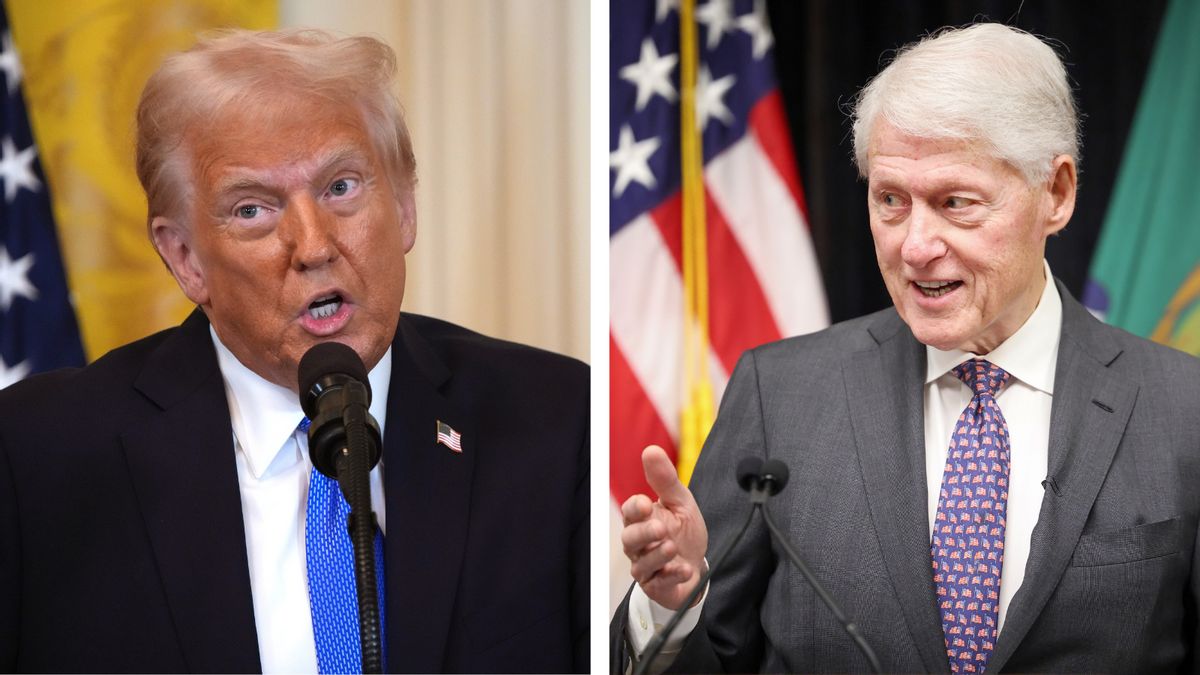During his time in office, U.S. President Bill Clinton oversaw the termination of 377,000 federal employees.
According to testimony from Elaine Karmarck, the director of Clinton’s initiative, it eliminated 426,200 federal roles between January 1993 and September 2000.
Looking back on the 1990s, it’s strange to imagine a time when a presidential campaign was won on a promise to balance the federal budget. Bill Clinton did it, too — the U.S. federal budget had a surplus between 1998 and 2001, the only time there’s been a surplus since 1970. (The government’s debt is $36.22 trillion at the time of writing).
In January and February 2025, U.S. President Donald Trump began giving Elon Musk’s Department of Government Efficiency (DOGE) increasing control over government services in an effort to eliminate federal government programs and dramatically slash spending.
Some media outlets claimed Trump and Musk’s methodology was unprecedented. In response, social media posts appeared pointing back to a Clinton-era initiative that “oversaw the termination of 377,000 federal employees,” as evidence that Trump and Musk had simply “learned from the master.”
On February 7, 2000 The Washington Post reported that between 1993 and 1999, the Clinton Administration reduced the size of the federal work force by 377,000 full time employees according to the budget. Reported tonight on Fox News.
— CAB (@SDMan02) February 7, 2025
It’s true that during his presidency, Clinton reduced the federal government’s workforce by more than 377,000 employees as part of an initiative called the National Partnership for Reinventing Government (initially called the National Performance Review, or NPR). However, there’s a key difference between how Clinton’s NPR cut jobs and what Trump and Musk are trying.
In March 1993, just two months into his presidency, Clinton announced the creation of the National Performance Review, led by his Vice President, Al Gore. Its goal, according to Clinton’s announcement, was “to make the entire Federal Government both less expensive and more efficient, and to change the culture of our national bureaucracy away from complacency and entitlement toward initiative and empowerment.”
The review lasted six months, and made 384 recommendations to improve the federal bureaucracy. The implementation of those policies took a lot longer, and some required legislation to be passed through Congress. For instance, in 1994, Clinton signed a bill that offered federal workers buyouts of up to $25,000 in an effort to reduce the workforce by 272,000 employees. According to an April 1995 statement from Clinton, the buyouts were largely offered to management positions in an effort to “reduce the layers of bureaucracy and micromanagement that were tying Government in knots.” That statement said that about 70 of the buyouts in non-Department of Defense agencies went to managers and other individuals “at higher grade levels.”
The initiative continued to make recommendations for government reform. According to a 1999 article on an archived version of NPR’s website, it reduced the federal workforce by 351,000 between 1993 and 1998. An archived FAQ page from 2000 said 377,000 jobs were cut between 1993 and 1999. In a 2013 appearance before the House Committee on Oversight and Government Reform, former National Performance Review leader Elaine Karmarck said the agency cut 426,200 jobs by September 2000.
But the buyouts offered by Clinton’s NPR and Trump and Musk’s Department of Government Efficiency are not the same. Clinton’s buyout plan had overwhelming bipartisan support from Congress, and the law was signed after a review period. Meanwhile, Trump and Musk offered the buyouts just one week into Trump’s term,
Federal employee labor unions have sued, questioning the legality of the buyout, and a federal judge has temporarily blocked the offer in order to review the lawsuit.











